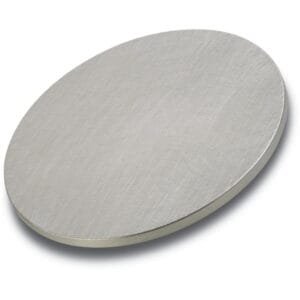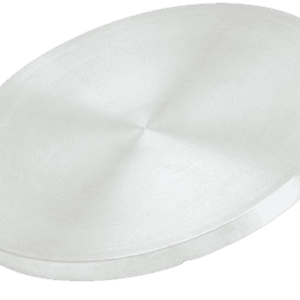Introduction
TFM offers high-quality Aluminum-doped Zinc Oxide Rotary Sputtering Target (AZO), ideal for transparent conductive films used in a wide range of electronic, optoelectronic, and solar applications. AZO is a highly effective alternative to indium tin oxide (ITO), providing excellent electrical conductivity, optical transparency, and chemical stability.
The rotary sputtering target design ensures efficient and uniform deposition of AZO films, making them perfect for transparent conductive layers in solar cells, touchscreens, and displays. AZO films are also used in transparent electrodes, optical coatings, and sensors, thanks to their low resistivity and high optical transmission in the visible spectrum. Additionally, the aluminum doping enhances the electrical properties of zinc oxide, further optimizing the films’ performance for advanced technologies.
TFM provides customized AZO rotary sputtering targets, ensuring precise control over composition and purity for optimal film deposition. These targets are designed for high-performance applications in industries like solar energy, electronics, and coatings, delivering reliable results in thin-film deposition processes.
Aluminum-doped Zinc Oxide Rotary Sputtering Target (AZO) Specifications
| Materials | Aluminum-doped Zinc Oxide Rotary Sputtering Target |
|---|---|
| Symbol | Al₂O₃/ZnO, AZO |
| Composition | Al₂O₃/ZnO 2/98 wt% or other ratios |
| Purity | ≥99.95% |
| Theoretical Density (g/cc) | 5.56 |
| Melting Point (°C) | N/A |
| Production Method | Bonded Type (Cold isostatic pressing + high-temperature sintering) |
| Backing Tube | Titanium, Stainless Steel |
| Bonding Material | Indium or Elastomer |
| Size | As per customer’s drawings |
| Relative Density | ≥97% |
| Resistivity (Ω·cm) | ≤0.001 |
| Annual Capacity | 1,000 tons |
Applications
- Thin Film Photovoltaic Solar Industry
- Semiconductor Electronics Industry
- Flat Panel Display Industry
- Construction / Automotive Glass Industry
For further details or to order, please contact TFM directly.





Reviews
There are no reviews yet.